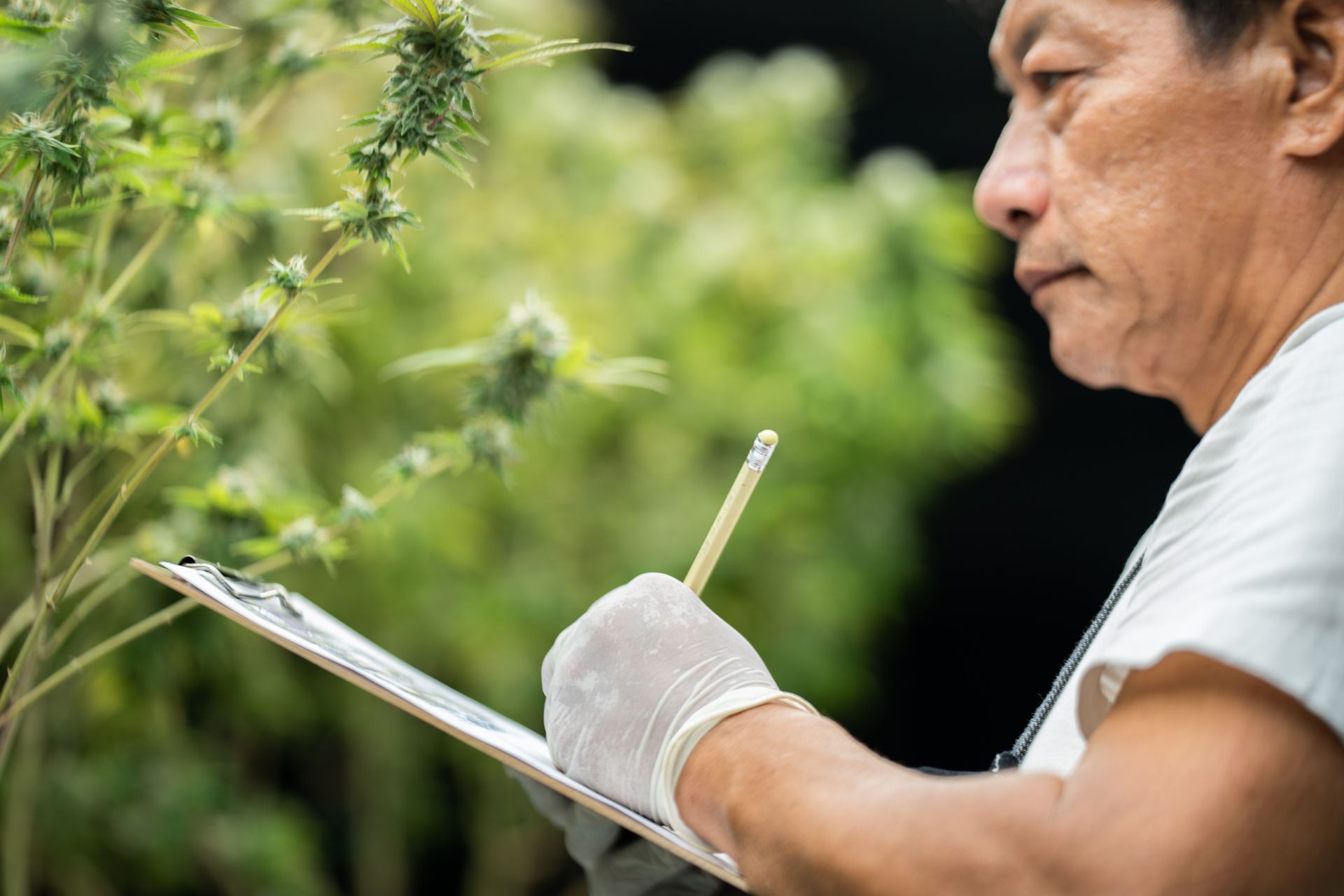The True Cost of Cyberattacks in the Cannabis Industry
See How We're Different
or call us: (215) 653-8411
Recent incidents, such as the ransomware attack on Stiiizy, which compromised the personal information of 380,000 customers, highlight the scale and severity of these threats. This article explores the multifaceted impact of cyberattacks on cannabis businesses, the factors that make this industry a prime target, and the critical steps necessary to mitigate these risks.
Why the Cannabis Industry Is a Prime Target for Cybercriminals
The cannabis sector's rapid expansion and regulatory complexity create an environment ripe for cyber threats. As Jodi Avergun, a former federal prosecutor and DEA chief, points out, the industry's emerging market status makes it especially vulnerable to fraud and cyberattacks. Many cannabis businesses and their investors often lack the cybersecurity awareness and protections typical in more established industries.
Moreover, cannabis retailers frequently operate with limited cybersecurity investments. The California Cannabis Industry Association has acknowledged that this lack of defense makes retailers attractive targets for cybercriminals. The combination of sensitive customer data, including photo IDs and addresses, and often insufficient security measures creates a perfect storm for breaches and ransomware attacks.
Emerging Industry Challenges
Unlike traditional sectors, cannabis businesses often face unique regulatory and banking restrictions that complicate their cybersecurity strategies. The cash-heavy nature of many operations limits investment in advanced security infrastructure. Additionally, many companies rely on third-party point-of-sale systems, which can become weak links if not properly secured.
For example, in 2023, a data breach at THSuite, a cannabis point-of-sale provider, exposed personal information of over 30,000 individuals, including photo IDs and addresses. Such incidents underscore the risks posed by vulnerabilities in essential service providers within the cannabis ecosystem. Furthermore, the fragmented nature of the cannabis industry, with various state laws and regulations, makes it challenging for businesses to implement uniform cybersecurity protocols. This inconsistency can lead to gaps in security that cybercriminals are all too eager to exploit.
Additionally, the stigma surrounding cannabis can deter companies from openly discussing their cybersecurity challenges or breaches, further complicating the industry's ability to learn from past mistakes. Many businesses may fear that admitting to a cyber incident could damage their reputation or lead to regulatory scrutiny. This culture of silence can prevent the sharing of vital information that could help bolster defenses across the sector. As the industry continues to evolve, fostering a more transparent dialogue about cybersecurity risks and solutions will be crucial for protecting both businesses and consumers alike.
The Financial Impact of Cyberattacks on Cannabis Businesses
Cyberattacks can inflict devastating financial damage on cannabis companies, far beyond the immediate costs of recovery. The average cost of recovering from business disruptions caused by cyberattacks has risen sharply, increasing from $1.2 million in 2017 to $1.9 million in 2019, according to the Sapphire Risk Advisory Group. This upward trend reflects the growing complexity and severity of cyber incidents.
More alarming is the significant gap between insurance coverage and actual costs incurred during data breaches. A 2025 report by AlphaRoot revealed that the average coverage gap in the cannabis industry is around 350%, with typical losses from breaches averaging $27.3 million. This disparity leaves many businesses exposed to substantial out-of-pocket expenses, threatening their survival.
Hidden Costs Beyond Immediate Losses
Beyond direct financial losses, cyberattacks often lead to long-term reputational damage, legal liabilities, and regulatory penalties. Cannabis businesses handle sensitive consumer data, and breaches can erode customer trust, resulting in lost sales and diminished brand value. The regulatory environment also means that failure to protect data adequately can lead to costly compliance issues.
In addition to these factors, the psychological toll on employees and management can be significant. The stress of navigating a cyber crisis can lead to decreased productivity, increased turnover, and a strained workplace culture. Employees may feel insecure about their jobs, especially if the attack leads to layoffs or budget cuts. Furthermore, the need for extensive training and awareness programs post-incident can divert resources from other critical business functions, compounding the financial strain on the company.
Given the heavy-tailed distribution of cyber risks identified in a 2022 study, the probability of extreme losses is higher than many businesses anticipate. This statistical reality means that while some attacks may cause minor disruptions, others can lead to catastrophic financial consequences. The cannabis industry, still in its growth phase, may find it particularly challenging to recover from such setbacks, as investors and stakeholders may lose confidence in the company’s ability to safeguard their interests. This loss of confidence can further exacerbate financial difficulties, creating a vicious cycle that is hard to break.
Case Studies Highlighting the Severity of Cyber Threats
Several high-profile cyber incidents in the cannabis industry illustrate the true cost and complexity of these attacks. The 2024 ransomware attack on Stiiizy stands out as a stark example, where personal information of 380,000 customers was compromised. The fallout from such an attack includes not only immediate remediation costs but also potential lawsuits, regulatory scrutiny, and loss of consumer confidence. The incident forced Stiiizy to halt operations temporarily, leading to significant revenue loss during a critical sales period. Moreover, the reputational damage was profound, as customers began to question the security of their personal information and the overall integrity of the brand.
Similarly, the 2023 breach at THSuite exposed sensitive customer data, demonstrating how vulnerabilities in third-party service providers can cascade into broader industry risks. This incident not only affected THSuite but also had a ripple effect on all businesses relying on their services. Clients experienced disruptions, and many were left scrambling to reassure their own customers about the safety of their data. These breaches emphasize the importance of comprehensive cybersecurity strategies that extend beyond internal defenses to include partners and suppliers. As the cannabis industry continues to grow, the interconnected nature of these businesses means that a single vulnerability can have widespread implications.
Lessons Learned
These cases highlight the urgent need for cannabis businesses to prioritize cybersecurity investments and adopt proactive risk management practices. Waiting until after a breach occurs can be financially and operationally devastating. Instead, companies must implement robust security protocols, conduct regular audits, and ensure compliance with evolving data protection regulations. Additionally, investing in employee training is crucial, as human error remains one of the leading causes of security breaches. By fostering a culture of cybersecurity awareness, businesses can empower their teams to recognize potential threats and respond effectively.
Furthermore, the cannabis industry must advocate for stronger cybersecurity standards and collaborate with regulatory bodies to establish best practices. As more states legalize cannabis, the industry will attract increased attention from cybercriminals seeking to exploit perceived weaknesses. By sharing insights and experiences from past incidents, companies can collectively enhance their defenses. Establishing a network for information sharing among cannabis businesses could also facilitate quicker responses to emerging threats, ultimately creating a more resilient industry landscape.
Strategies for Mitigating Cyber Risks in the Cannabis Industry
Addressing the cybersecurity challenges in the cannabis sector requires a multi-layered approach. Businesses must begin by recognizing their vulnerability and committing adequate resources to cybersecurity defenses. This includes investing in advanced threat detection systems, employee training, and secure data handling practices. The rapidly evolving nature of cyber threats necessitates that cannabis companies stay informed about the latest security technologies and trends. Regular updates to software and systems, coupled with a robust patch management strategy, can significantly enhance a company's defense against potential breaches.
Engaging with cybersecurity experts who understand the unique regulatory and operational aspects of the cannabis industry can provide tailored solutions that reduce risk. Additionally, companies should carefully vet third-party vendors and ensure contractual obligations include stringent security requirements. This vetting process should extend beyond initial assessments; ongoing monitoring of vendor security practices is essential to ensure compliance and protect sensitive data throughout the supply chain. Establishing clear communication channels with vendors about security protocols can further bolster defenses against potential cyber threats.
Insurance and Risk Management
Given the significant financial exposure from cyberattacks, obtaining comprehensive cyber insurance is critical. However, as the AlphaRoot report indicates, there is often a substantial coverage gap. Cannabis businesses should work closely with insurers to understand policy limits, exclusions, and ensure coverage aligns with potential loss scenarios. It is also advisable for companies to engage in discussions with multiple insurers to compare policies and tailor coverage to their specific operational risks, as the cannabis industry often faces unique challenges that may not be adequately addressed by standard policies.
Regular risk assessments and scenario planning can help organizations identify vulnerabilities and develop incident response plans. These proactive measures not only reduce the likelihood of successful attacks but also minimize damage when breaches occur. Furthermore, cultivating a culture of cybersecurity awareness among employees can enhance overall security posture. By fostering an environment where staff members are encouraged to report suspicious activities and participate in security drills, businesses can create a more resilient framework that is better prepared to respond to cyber incidents. This holistic approach to risk management not only safeguards sensitive information but also builds trust with customers and stakeholders, reinforcing the company's commitment to security in an increasingly digital landscape.
Looking Ahead: The Future of Cybersecurity in Cannabis
Conclusion
The true cost of cyberattacks in the cannabis industry extends far beyond immediate financial losses. It encompasses reputational damage, regulatory risks, and long-term operational challenges. With high-profile breaches affecting hundreds of thousands of customers and insurance coverage gaps leaving companies exposed, the urgency to address cybersecurity cannot be overstated.

Article By: Deb Sculli
Cannabis Insurance Specialist




